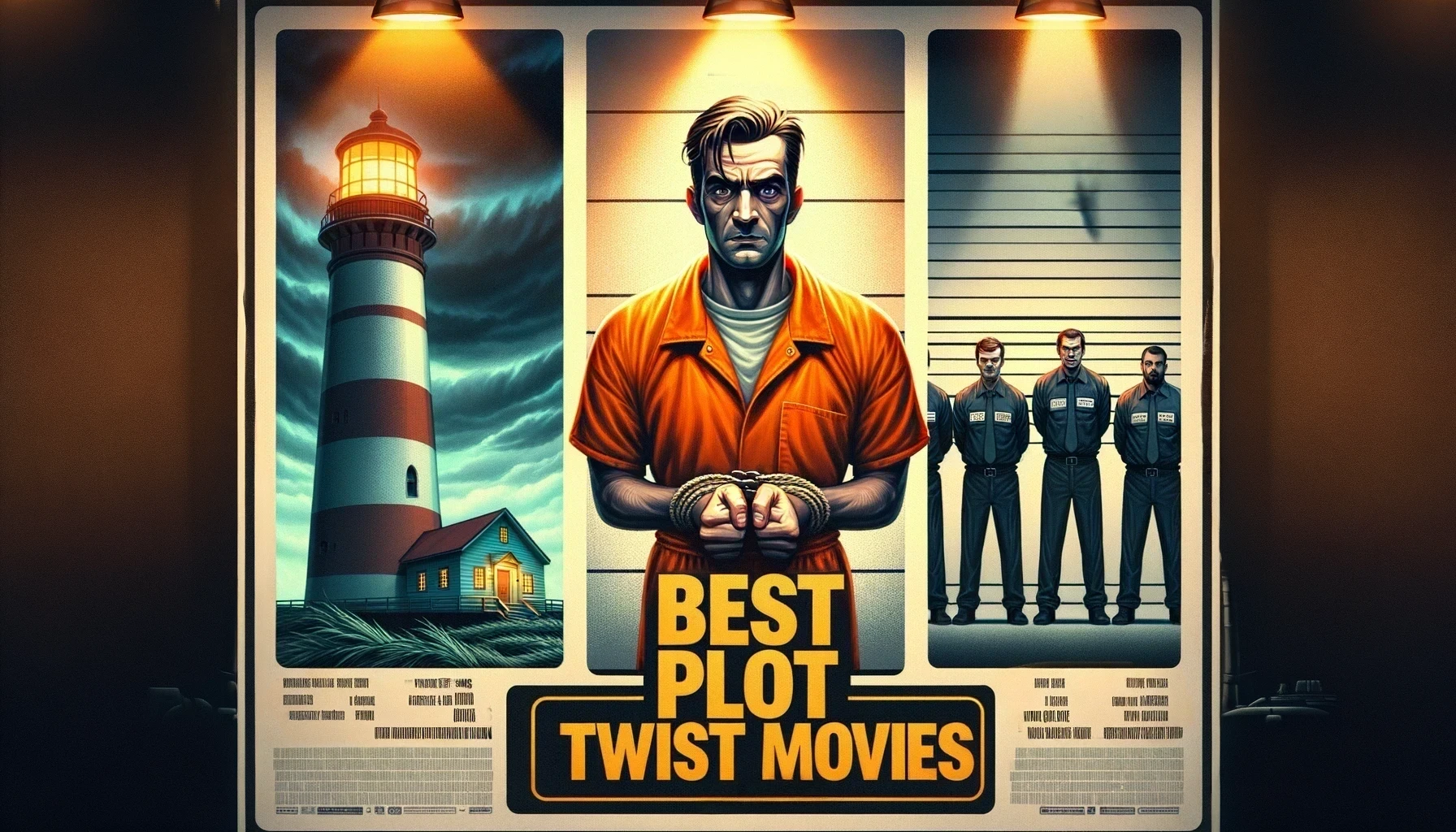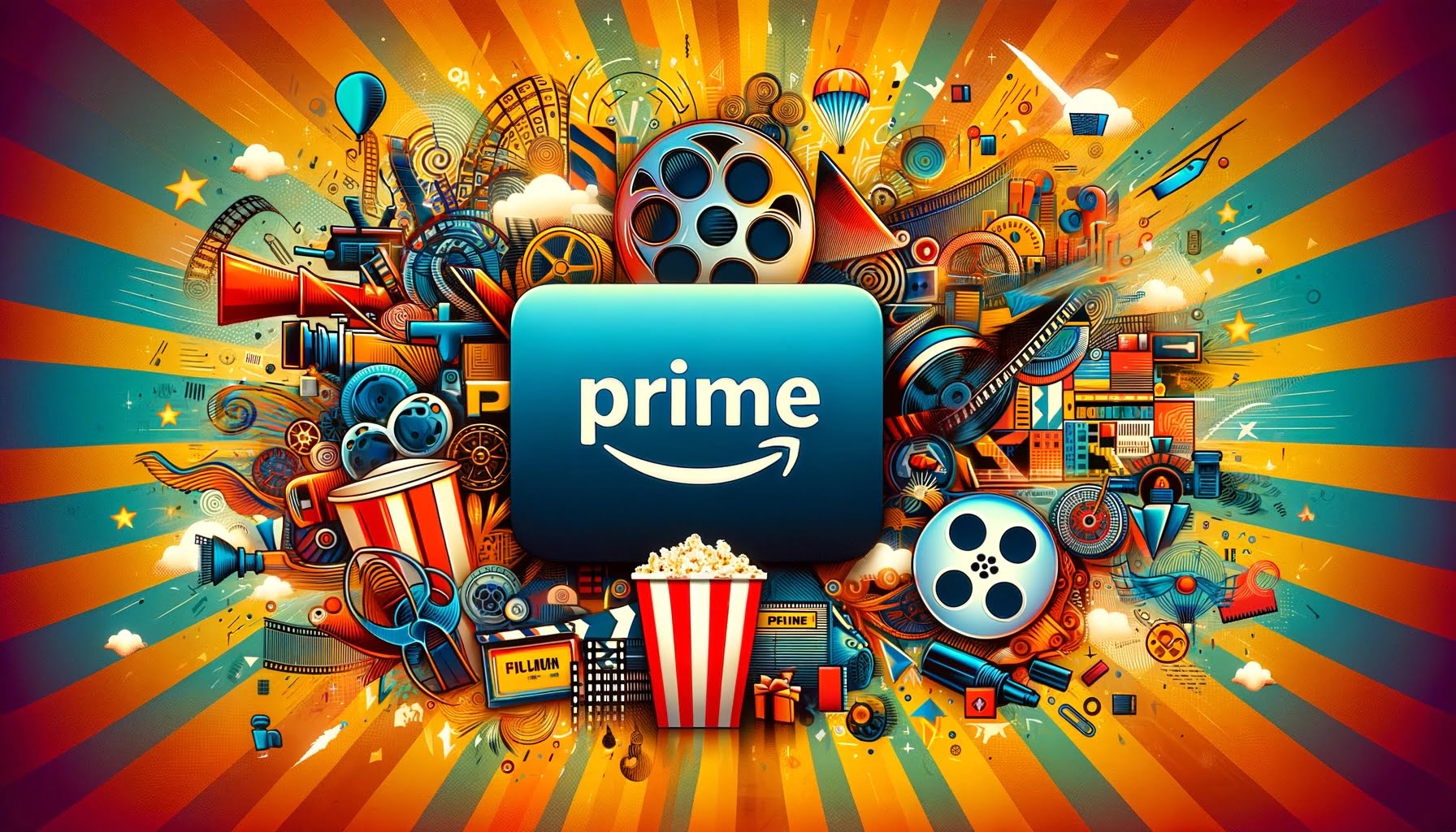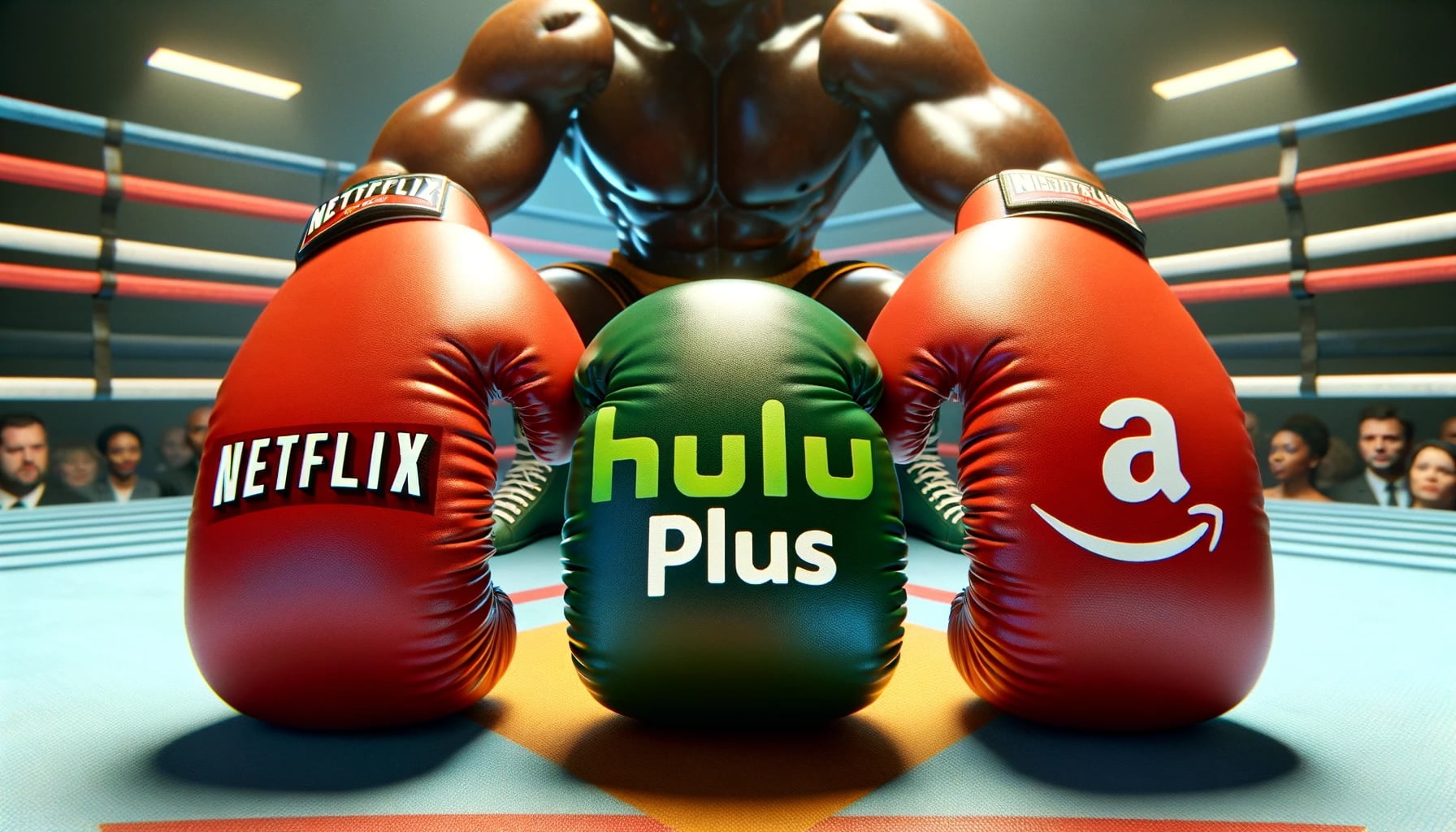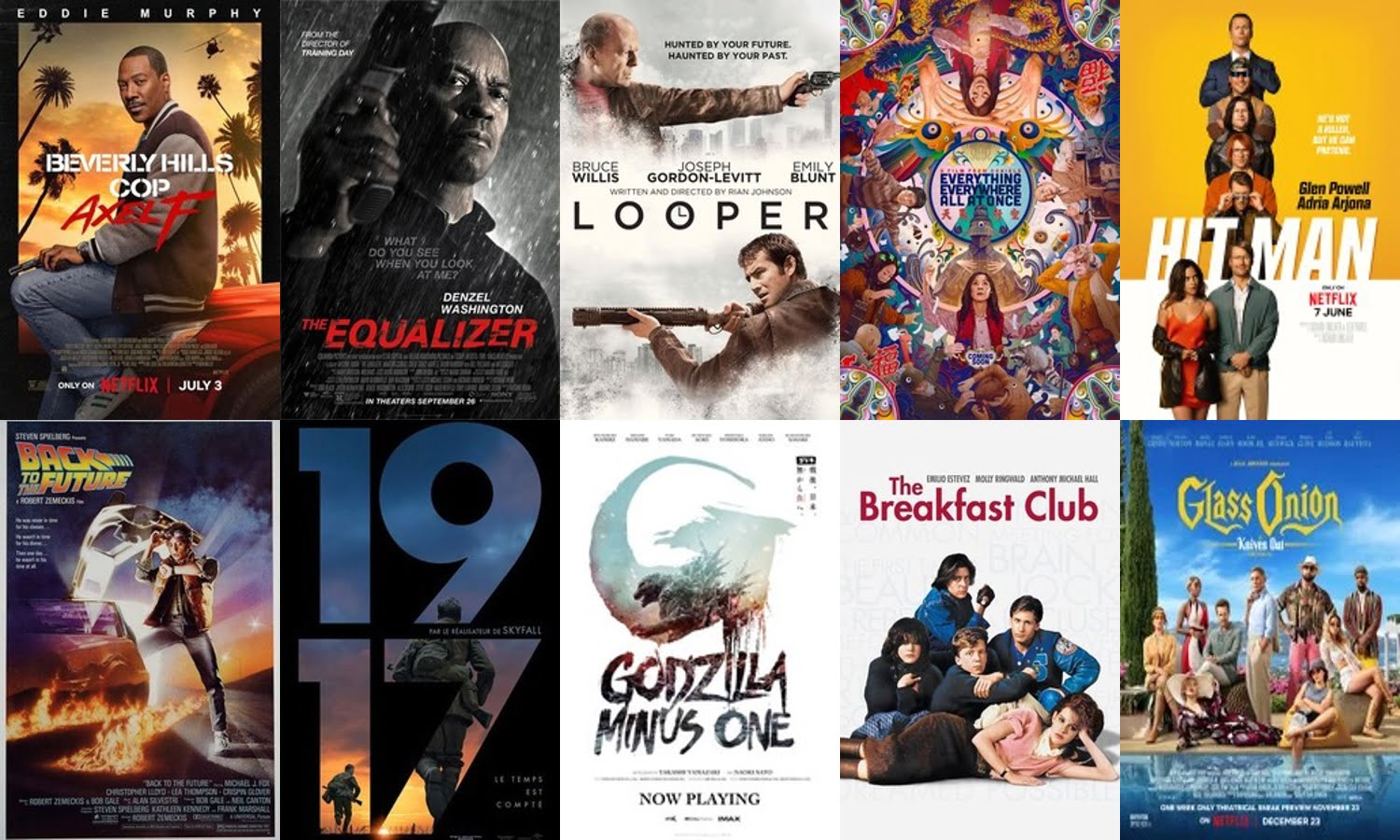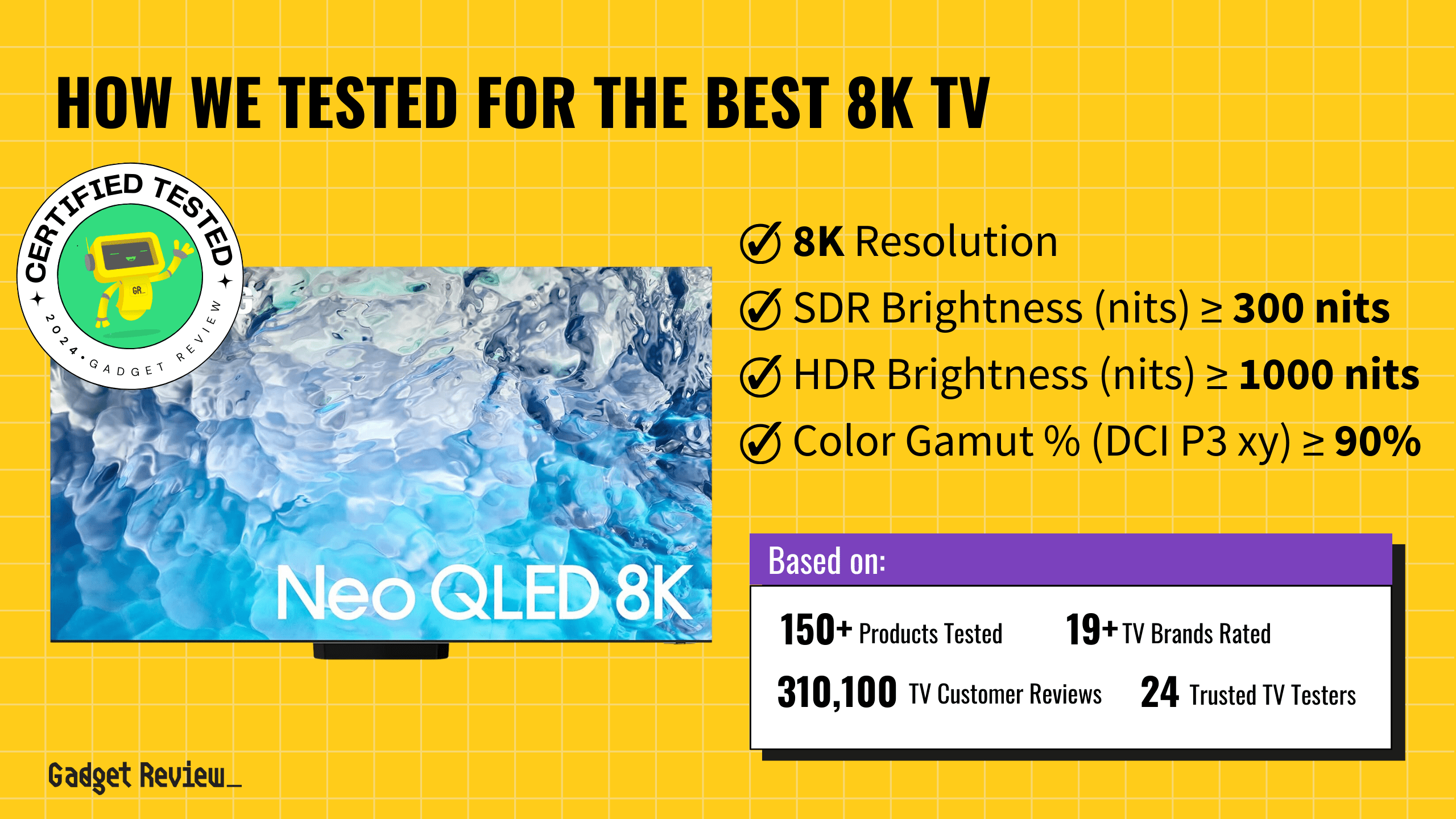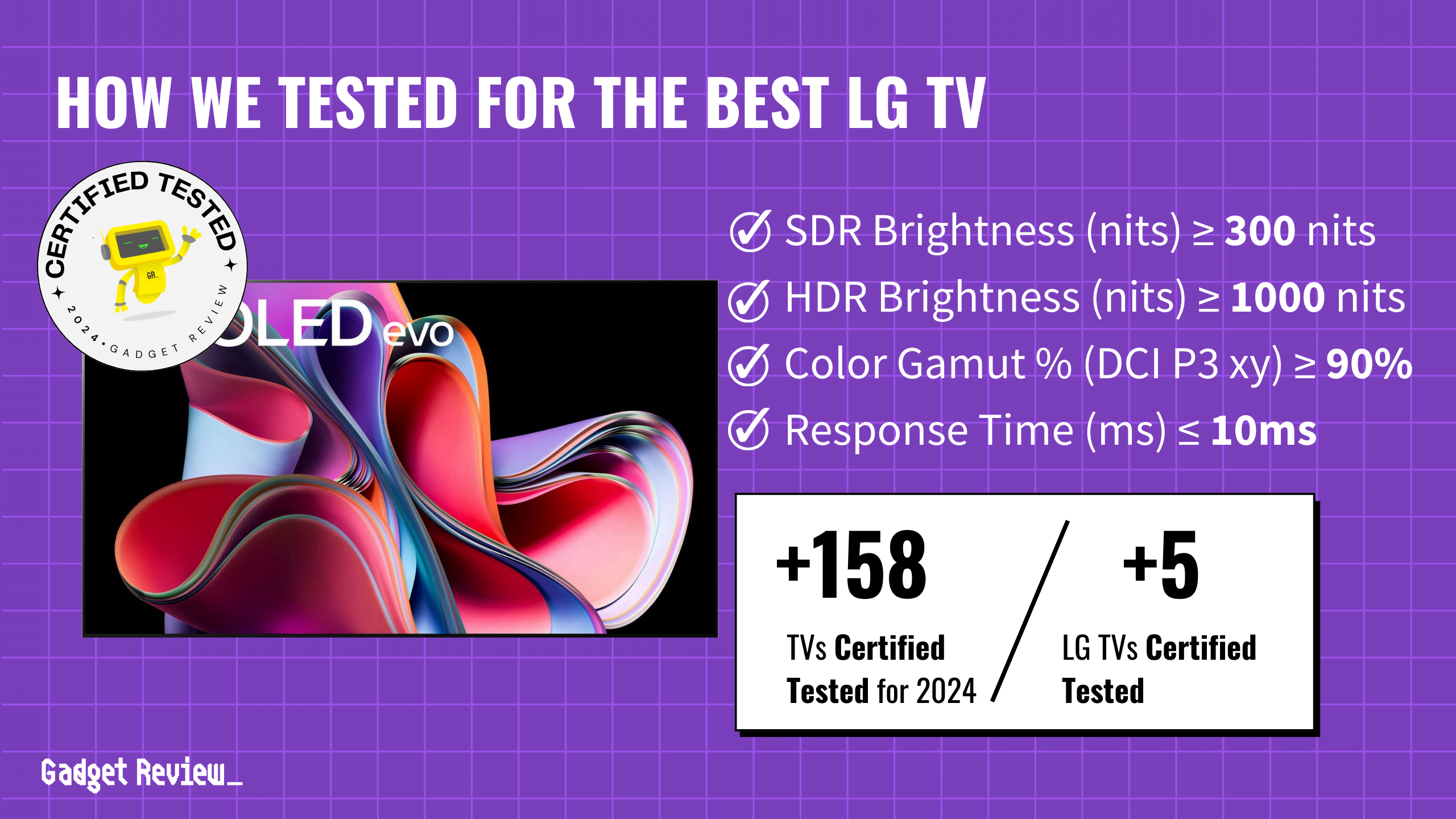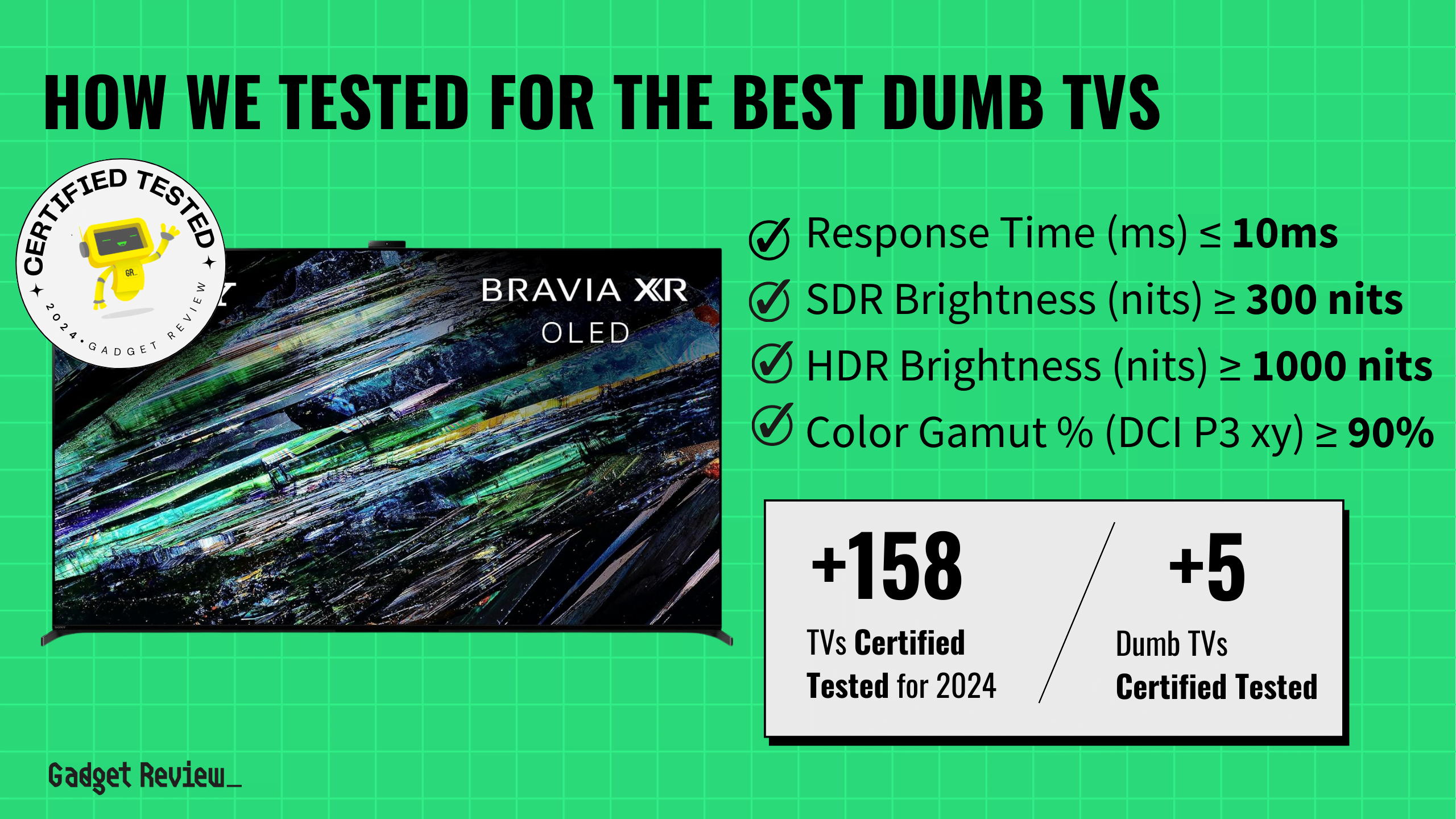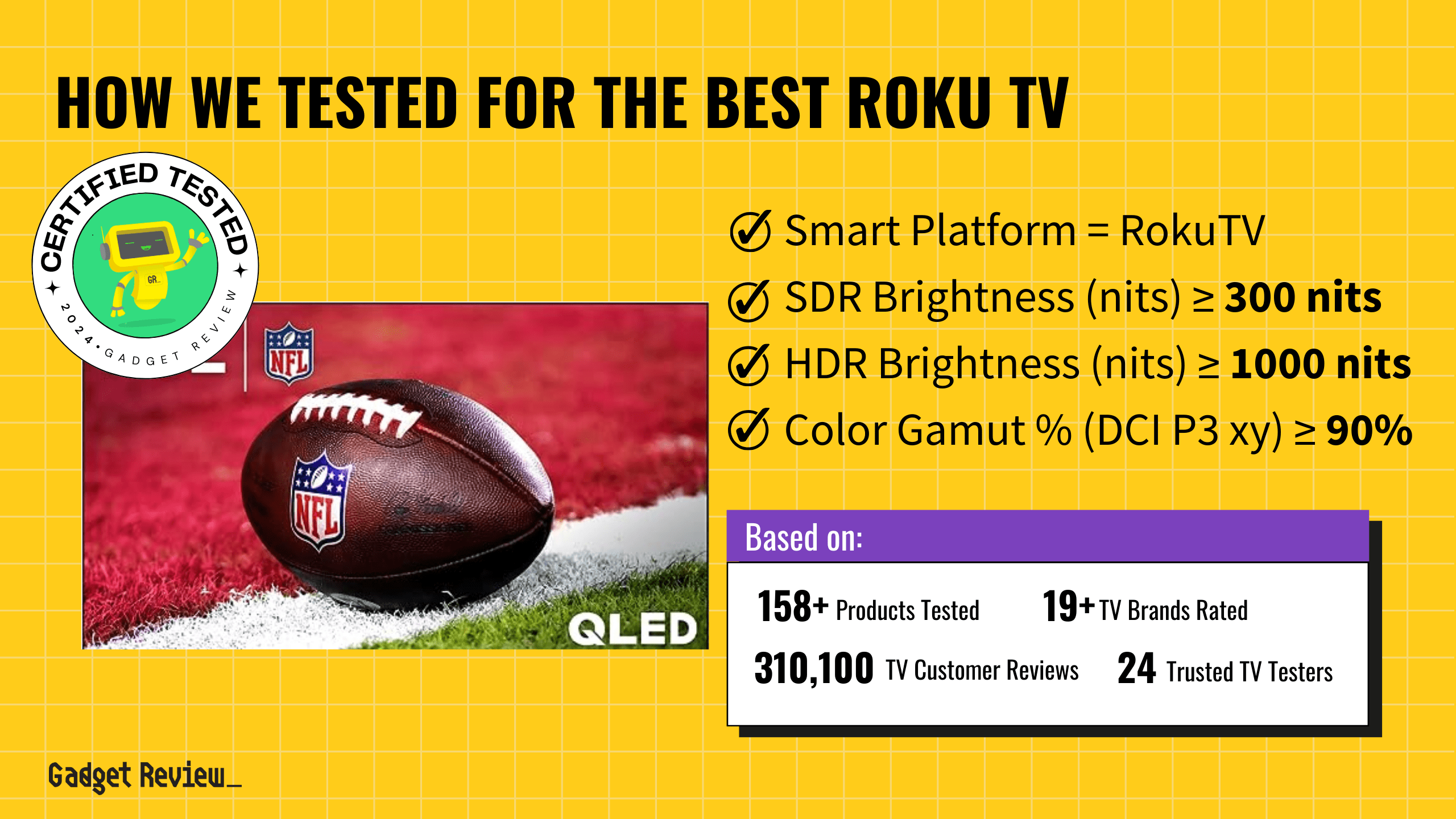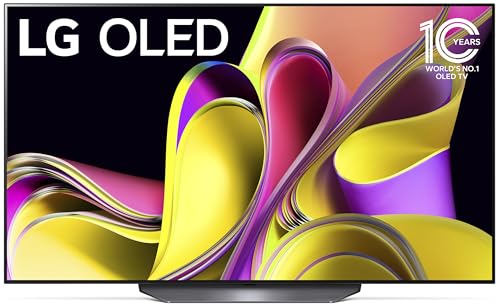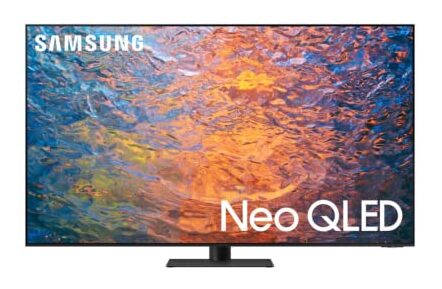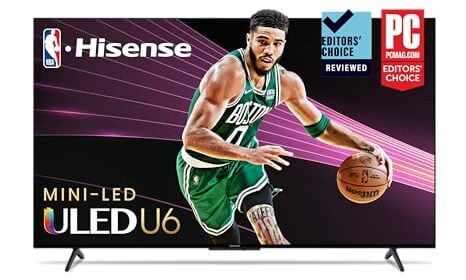Looking for the best 24 inch TV? You’ll be hard-pressed to find 24-inch TVs among the best TVs on the market, but they do exist. Available at affordable prices, the top 24-inch smart TVs feature beautiful LED displays and multiple connectivity options, such as HDMI and USB ports, that allow you to link streaming devices and game consoles. Many also incorporate smart features with Amazon Fire TV or Android TV capabilities.
Because of their compact size, 24 inch TVs are excellent for use in small spaces, like bedrooms and kitchens. This also makes it easy to move them around, if you need to. Although you won’t find 4K resolution on these TVs, you’ll still get excellent picture quality from Full HD options.
Keep reading to learn about choosing a 24 inch TV, the pros and cons of these models, how long they last, and other factors.
Top 24-Inch TVs
#1 Vizio 24-inch D-Series Full HD Smart TV
Award: TOP PICK
WHY WE LIKE IT: This TV is pretty easy to use and is well recommended for streamers. Its support for voice control allows for convenient usage, and with an easy-to-use interface, navigation is as simple as can be.
- Superb picture quality
- Variable Refresh Rate for gaming
- Support for Voice control
- Lack of support for HDR content
The Vizio 24-inch D-Series Smart TV is a decent pick for anyone in the market for a Full HD display. Its 1080p resolution offers clear picture quality, and its free WatchFree+ streaming platform offers loads of content to enjoy. The display comes with a Full Array Backlight for good contrast, and its 24-inch screen size allows for very convenient placement. The TV is also pretty easy to navigate thanks to its SmartCast user interface, and with support for a Variable Refresh Rate, gaming is pretty smooth. Its only caveat is the lack of support for HDR content.
The display also comes with Chromecast built-in, so users will be able to stream or mirror their content to view it on TV. Its support for voice control through integration with Alexa, Google Home, or Apple HomeKit makes it very convenient to use. Since it also comes with a 2.1 HDMI port, gamers will be able to connect their PS5s and Xbox Series X consoles without any issues. If you want to use this outdoors like the best TVs for outside, we recommend you plan the viewing distance for your setup and see if it’s right for you and your needs.
#2 SuperSonic SC-2412 LED Widescreen HD TV
Award: HONORABLE MENTION
WHY WE LIKE IT: This TV is great for users that love to play their DVDs without connecting to an external player since it has its own built-in. It also offers good connectivity options and has decent picture quality.
- Surprisingly good picture quality
- Built-in DVD player
- Digital noise reduction
- No support for voice control
The Supersonic SC-2412 LED TV is an excellent choice for users who would enjoy a 1080p display. One of its main highlights is that it features a built-in DVD player, so users won’t need to connect an external player to play their DVDs. It also features a decent array of HDMI, USB, and AC ports that allow for good connectivity options. With Digital Noise Reduction, users will also be able to enjoy clearer sound quality when playing movies. Users will, however, miss out on its lack of support for voice control.
The TV should allow for general watching thanks to its built-in ATSC tuner. This allows it to receive digital TV signals. It is also perfect for users who already own a Streaming stick like the Amazon FireStick, for example, and with the capacity to easily connect to the Internet, users shouldn’t have any problem with streaming their favorite content.
#3 Element Electronics E1AA24R-G 24″ 720p Roku LED HDTV
Award: BEST FOR REGULAR USE
WHY WE LIKE IT: This is a basic TV with no special features. It is ideal for users who would like to easily watch TV with no hassle.
- Decent range of connectivity options
- VESA mount ready for wall mounting
- Lightweight
- No support for HDR
- No gaming features
This 24-inch display from Element offers content in great detail courtesy of its 720-pixel resolution. It is an LED TV that offers decent connectivity thanks to its support for VGA, USB, and HDMI connectivity. It comes ready to mount to the wall thanks to its VESA mount compatibility, but for those that decide not to, its two-legged stand will make sure that it does not wobble when placed on a tabletop. Most users will also appreciate the smart platform’s ease of use but probably frown at its lack of HDR support or gaming features.
This TV is an excellent pick for users who don’t need too many features on their display and just want to watch TV or content from a connected USB device. It also offers decent sound quality and is perfect for anyone who would enjoy playing movies from their USB stick. Its 6-pound weight also makes it easy to move around.
#4 LG 24LQ510S-PU 24-inch Smart TV
Award: BEST FOR GROUP VIEWING
WHY WE LIKE IT: This TV offers wide viewing angles that make it ideal for group viewing, and since it is VESA mount ready, it is very easy to wall-mount.
- Great viewing angles
- Built-in Wi-Fi connectivity
- VESA wall mount ready
- Not ideal for gaming
The 24-inch LG 24LQ510S-PU is a decent HD TV that offers accurate imagery with fantastic contrast and rich color. It is a widescreen TV that offers a great viewing angle, and with Wi-Fi connectivity built-in, owners will be able to seamlessly view content from other devices. Navigating the TV is pretty easy thanks to its webOS 22 platform, and with streaming apps like Netflix, Hulu, and Sling pre-added, all owners will have to do is log in to their accounts and enjoy their favorite content. Unfortunately, it doesn’t have the prerequisite features for gaming.
The display is also VESA wall mount compatible since it comes with the required screw holes, and with two HDMI inputs on its rear, the TV is ready for connections to your PC, Blu-Ray player, or gaming console. Thanks to its wide stance, the TV remains pretty stable regardless of wherever you place it.
#5 Westinghouse 24″ HD TV
Award: BEST FOR CASUAL VIEWING
WHY WE LIKE IT: This TV depicts dark blacks very well courtesy of its good contrast. It is very easy to move around due to its lightweight and comes ready for VESA wall mounting.
- Extremely lightweight
- VESA wall mount compatible
- Not ideal for gaming
- No Wi-Fi connectivity
The Westinghouse 24″ model is a 720p HDTV that is pretty easy to operate. Weighing less than 5 pounds, the display is very portable, and with a decent 1000:1 contrast ratio, it handles dark scenes okay. Its 60Hz refresh rate offers good motion clarity for a TV of its caliber, and with support for HDMI, USB, and VGA connectivity, users will be able to connect to other content sources with relative convenience. Gamers, however, will not likely appreciate its lack of advanced gaming features or lack of Wi-Fi connectivity.
This TV comes ready to wall-mount thanks to VESA compatibility, and its picture quality is pretty good for its pricing. It would work great as a bedroom TV thanks to its small size, and with its ports located on its left side, they’re pretty easy to get to. The TV is very easy to move around, and with a 60Hz refresh rate, fast-moving content is processed without any noticeable motion blur.
#6 Samsung M5 Series 1080p FHD TV
Award: BEST FOR PRODUCTIVITY
WHY WE LIKE IT: This TV comes with smart features that make it ideal for increased work productivity, making it a perfect second display to connect to your main laptop or screen.
- Amazing for work productivity
- Automatically adjusts brightness to environment
- Support for voice control
- Not ideal for gaming
The Samsung M5 Series is a 4K resolution display that promises to deliver exceptionally clear picture quality. It also comes pre-installed with all the popular streaming apps and allows users to use it as they would a PC, thanks to its Wireless DeX function. This means they’ll get all-around access to their content by just tapping the TV with their Samsung phone. The TV also allows for Airplay 2 integration, so Apple devices and monitors will be able to relay their content on the screen for better workflow. The TV’s only downfall is its lack of a dedicated game mode for enhanced gaming performance.
Thanks to its Adaptive Picture feature, the M5 can also adjust to your ambiance. It comes with a sensor that picks up on the brightness levels in a given environment and adjusts its brightness automatically so that users can enjoy their viewing experience without having to strain their eyes. So this TV acts like both the best TV for bright room and for a darker room too, all in one. It also features a voice assistant for a more convenient user experience and the Microsoft 365 suite built-in for increased productivity.
Beginner’s Guide to 24 Inch TVs
What is a 24 Inch TV?
A 24 inch TV is simply a television that measures 24 inches wide diagonally. They generally come with support for Full HD or 720p resolution, and many models have built-in internet functionality. They typically also come with a remote control and may feature voice control capabilities, especially if the model you choose happens to be an Amazon Fire TV or Android TV. With their sleek design and smart devices, these TVs offer a brilliant picture quality that is sure to impress.
Televisions in this size category can easily be viewed from 6 feet away, making them perfect for small spaces, like kitchens, dorm rooms, or as part of a gaming setup.
24 Inch TVs vs Other TVs
A 24 inch screen size TV is similar to other TVs in displaying images, but the primary difference is in terms of size. Due to the small size, you will not find OLED and QLED TVs in the 24-inch category like you will in larger models. These TVs also won’t provide a wide viewing angle like models in bigger size categories.
Larger televisions also will generally have better audio quality from built-in speakers and provide higher resolutions. You simply will not find 4K resolution on displays this small. However, you will find 24 inch smart LED TVs in the market with support for full HD and 720p resolution.
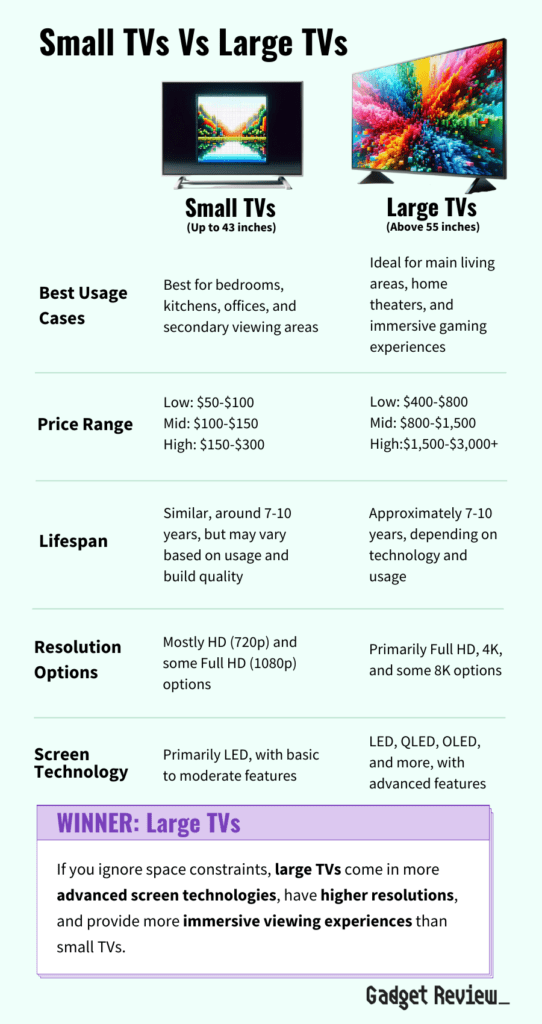
Like larger TVs, these models also sport multiple connectivity options, like HDMI, VGA ports, and USB ports, while some smart options will have an ethernet port as well. Some will also have a 3.5mm headphone jack on the back for watching your favorite shows without disturbing anyone else in your dorm or home. Some models even have built-in DVD players.
How a 24 Inch TV Works
A 24-inch TV works like regular TVs—converting electrical signals into pictures and sounds. If it’s a smart TV, it’ll have an integrated platform that lets you access and use internet-based content. There won’t be a need to connect additional streaming devices, like the Amazon Fire Stick, Google Chromecast, or Roku.
A smart TV connects to a Wi-Fi network, similar to how you connect to Wi-Fi with your smartphone or laptop at home. These TVs come loaded with streaming applications, and they also showcase apps the way they’re displayed on your smartphone. Netflix and YouTube are some common apps that are preloaded on smart TVs.
A dumb TV or non-smart TV comes without built-in internet functionality. If it has the proper connectivity options, though, it can be converted into a smart TV using a streaming device, like the ones mentioned above.
Why should you buy a 24 Inch TV?
A 24-inch TV is compact and apt for small spaces. If you’re looking for a TV to place in your bedroom, dorm room, or kitchen, this size is perfect. Since it doesn’t take up much space, it wouldn’t dominate your living space, and you’ll also find it easy to move this small TV around if needed. Let’s look at some more reasons why it’s worth buying and why you’ll want to avoid it.
Are 24 Inch TVs Worth Buying?
- You Want a Compact TV: 24 inch TVs are appropriate for smaller spaces, like a kitchen or bedroom. Looking for something even smaller? Check out the best small TV.
- You Aren’t Looking for a Stunning Visual Experience: Bigger TVs offer deeper immersion and a better overall viewing experience. If top-notch visuals aren’t your priority, a 24-inch TV should be fine.
- You Don’t Have a Big Budget: As you go up the size chart, the cost increases too. If you’re on a tight budget, a 24 inch TV may be right up your alley. They can be a good option if you just want something that can get the job done and let you watch something while you wind down from a long day, alongside the best 50 inch TVs.
Why a 24 Inch TV May Not Be for You
- You Want a Bigger TV: A 24-inch TV is quite small, almost like a desktop monitor. It’s not a suitable choice if you want a bigger size like the best 60 inch TV to enjoy visuals in a grander way or want to use it in a large room.
- You Want Advanced Display Technology and 4K: The smallest 4K TV is 32 inches, so you won’t find 24-inch TVs that offer 4K resolution. Similarly, there are no 24-inch TVs with OLED or QLED technology. If you need a 4K resolution and a small size, check out the best 32-inch TV. If you are wanting to get a 32-inch model, be sure to check out our page on TV size vs distance to ensure that it will fit in the space you have.
How Long Will a 24 Inch TV Last?
How long a TV lasts depends on its quality, how much it’s used, how well it’s maintained, and most importantly, the display technology.
An LCD TV offers around 50,000 to 60,000 hours of viewing. At 8 hours of viewing per day, it can last you close to two decades (it’s unlikely you’ll use it for that long).
LED TVs have a lifespan between 40,000 and 100,000 hours, but that’s at maximum or near-maximum brightness. Even with heavy use, these TVs should work well for at least 5 to 7 years, and over a decade with moderate or low usage. Beyond that period, there’ll likely be a decrease in image quality.
Despite the better performance, OLED TVs have a limited lifespan compared to LED TVs. After about 8 to 10 years of use at optimal settings, you’ll see a decrease in performance and image quality.
QLED TVs use quantum light-emitting diodes to massively boost the colors and the brightness of images on the screen. Since it’s not based on organic materials, QLED doesn’t degrade over time. This means QLED TVs provide top-of-the-line image quality that lasts way longer than other display technology. At max settings, QLEDs should last from 7 to 10 years or longer without any degradation in visual quality.
QLED TVs are also guaranteed to be burn-in-free, so you can be sure that they’ll offer you the best viewing experience. Burn-in is when static images, like channel logos, are displayed for long periods and leave a permanent outline on the screen.
How to Choose the Best 24 Inch TV
Once you’ve decided to pick up the best 24-inch TV, you must consider several factors to narrow down your selection. Display technology, resolution, refresh rate, and price range are a few of these aspects. Let’s look at these and more below.
24 Inch TV Key Factors
1. What Display Technology Do You Want?
LCD, LED, OLED, and QLED are some of the different display technologies available in the market.
LCD stands for liquid crystal display, and standard LCD monitors use fluorescent tubes to produce light and brighten the picture. Although it’s low on cost, the picture quality isn’t as good as LED displays.
LED (light-emitting diode) also uses a liquid crystal display, but instead of fluorescent tubes to produce lights, it relies on light-emitting diodes. This mechanism in LEDs leads to superior picture quality and sharper images than standard LCDs.
While LED and LCDs need backlights to produce brightness, OLED (organic light-emitting diode) displays need no backlight because they use a sheet of organic LEDs and each OLED subpixel produces light. This results in deeper blacks, incredible image contrast, and the highest picture quality. The visuals retain their sharpness and quality even when viewed from an angle.
QLED (Quantum-dot LED) TVs have traditional LCD panels that are lit by LEDs. A quantum dot layer fills the space between the LCD panel and the backlight to create more saturated colors, but it’s not backlight-free like OLED displays. QLED displays are brighter than OLEDs and are apt for bright spaces that receive a lot of sunlight. But in terms of picture quality and realism, OLEDs are generally better. There are no 24 inch OLED and QLED TVs on the market currently, but you’ll find 24-inch LED TV on the market.
2. What’s the Resolution?
Resolution refers to the number of pixels that compose the image on the TV screen. The higher the number of pixels, the higher the quality and sharpness of the picture.
At HD resolution, you have 921,600 pixels, and it doubles to 2 million with Full HD. But with 4K, you’re looking at a whopping 8 million pixels! This is a massive jump from Full HD images, and it means all the visuals will have incredible clarity despite the size of the display.
4K content has grown substantially over the years, and you’ll find plenty of 4K media on streaming apps like Netflix and Amazon Prime. If you love watching films, you’ll want to get a TV that supports 4K resolution so that you can see all the visual elements the way they were intended to be seen. Not just that, even watching your own photos and videos on a 4K TV will feel significantly better.
At the time of publishing, there are a few TVs that offer 8K support now, but there is practically no 8K content to stream. None of the major streaming platforms have any 8K content, so you can skip these for now. If you’re picking up a small 24 inch TV, Full HD resolution will still give you great picture quality. As you go up the sizes, though, you’ll want to select 4K resolution.
3. What’s the Refresh Rate?
The refresh rate determines how many times per second a picture is refreshed on the screen. The standard refresh rate is 60 times per second, and it’s measured in Hertz (60 Hz).
But if a visual sequence has too many elements moving around swiftly, a 60 Hz refresh rate can make everything look choppy or blurry. That’s why companies have created monitors and TVs with support for higher refresh rates, like 120 Hz and 240 Hz. The higher the refresh rate, the smoother the visuals will look, especially when viewing sports or action films.
Gamers will significantly benefit from a higher refresh rate of 120 Hz on their TVs because it smoothes out the visuals and ensures the players receive more frames per second. Seeing more frames per second can give you a colossal advantage while playing competitive FPS games.
4. Does It Have HDR?
HDR stands for high-dynamic range, and TVs that support this can capture and produce a wide range of colors. The highlights will also be brighter, the colors will pop, and there’ll be higher contrast so that the visuals look more natural and accurate. Without HDR, a TV can’t reproduce specific colors authentically; it’ll try to use substitute colors, but the result will look different from how the image was originally shot.
HDR is supported across LCD, LED, OLED, and QLED screens, but it’s only available on 4K displays.
5. Is It Smart or Dumb?
Smart TVs have become quite common in the market now. The built-in internet functionality and the advanced TV operating systems make it super convenient to stream your favorite content at any time. It’s no wonder more people are cutting the cord and moving to streaming services. If you have never used a smart TV, check out our page for some smart TV tips to help you out.
But smart TVs are generally more expensive, and if you’re on a super tight budget, you may have to pick a dumb TV — a TV without internet connectivity or an operating system. These smaller-sized TVs are usually where you will find the best dumb TV but there are some large screen options as well. If you don’t mind a dumb TV that is a little bit smaller, check out our LG UN7300 review.
6. What’s Your Budget?
The market is filled with premium TVs that cost thousands of dollars and have advanced features, but you can easily find TVs at a more affordable price with a little bit of research. Smaller-sized TVs are always less expensive than the larger models, and you’ll find 24-inch smart TVs for $150 to $450. But if there’s a sale, you can pick up a 24-inch screen for a little less than $100.










